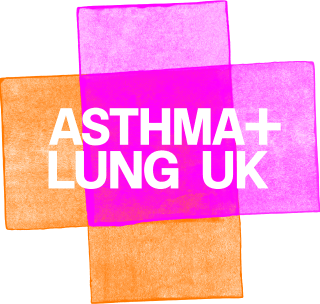What is pectus carinatum (pigeon chest)?
How do you say pectus carinatum?
Pectus: peck-tuhs
Carinatum: kah-rin-ay-tum
Pectus carinatum, also known as ‘pigeon chest’, happens when your breastbone and ribs (the bones that protect your heart and lungs) stick outwards and appear raised.
It can be the same on both sides (symmetrical) or affect one side more than the other (asymmetrical).
Pectus carinatum is usually more noticeable in children or teenagers when they're growing.
Pectus carinatum and mental health
We know that some people with pectus carinatum feel shy or self-conscious about how they look. This can have a big impact on your well-being.
If you need help, there are lots of mental health services that can advise and support you.
How common is pectus carinatum?
In the UK, around 1 in 1,500 people have pectus carinatum.
Males are around four times more likely to be affected than females.
What causes pectus carinatum?
It’s not known for sure what causes pectus carinatum. It may happen when:
- cartilage, a type of tissue between the ribs and the breastbone, grows too much
- parts of the breastbone grow too much.
Pectus carinatum can also appear as part of rare genetic conditions, such as Marfan syndrome, Ehlers-Danlos syndrome and Noonan syndrome.
Symptoms of pectus carinatum
The main sign of pectus carinatum is a raised chest.
Most people with pectus carinatum do not have any symptoms. But some people have:
- discomfort where the breastbone is raised
- a tight chest or shortness of breath, especially after exercise.
How is pectus carinatum diagnosed?
Healthcare professionals can usually diagnose pectus carinatum by looking at your chest.
Sometimes people have more tests to check for related health conditions:
- a chest X-ray or CT scan to check for scoliosis (a curved spine). Around 1 in 10 people with pectus carinatum also have scoliosis.
- blood tests and cardiopulmonary exercise tests (CPET) can check for genetic causes of pectus carinatum, such as Marfan syndrome and Noonan syndrome.
How is pectus carinatum treated?
Pectus carinatum is not harmful, but it does not go away on its own. It depends on how severe the pectus carinatum is, but most people with pectus carinatum do not need any treatment.
In some mild cases, certain exercises can build muscles that make the chest shape less noticeable.
If you have severe pectus carinatum and physical symptoms, there are some treatments available.
Is treatment available in my area?
Not every part of the UK offers the same treatment for pectus carinatum. Speak to your healthcare professional for more information.
Chest brace
A chest (pectus) brace is a special piece of equipment that you wear. It can help stop pectus carinatum from getting worse as you grow.
The chest brace needs to be worn every day to put gentle pressure on your breastbone. It helps to change the shape and position of your breastbone over time.
How long you need to wear the brace for is different for everyone. It can depend on:
- your age
- how flexible your breastbone is
- whether your condition is mild or moderate to severe.
Wearing a chest brace may feel uncomfortable at first, but it should get better over time.
Ravitch procedure
The Ravitch procedure is a type of open surgery for adults with complex pectus carinatum.
A large cut is made to reshape the chest wall (ribs, breastbone and cartilage).
To keep the chest in the right shape, one or more metal bars, or mesh support, are placed under the chest wall. The metal bars are usually removed after two to three years.
If you’re eligible for surgery, your surgeon will talk to you about the risks and benefits.
Physiotherapy
Physiotherapy can be used to help you recover from surgery, and alongside treatment like chest bracing.
A physiotherapist can show you exercises and give you advice to help:
- strengthen the muscles around your breastbone
- improve your core strength and posture
- reduce your breathlessness.
Physiotherapy cannot reverse pectus carinatum. But it may help improve the overall shape of the chest.
Living with pectus carinatum
Here are some things you or your child can try, to help you live well with pectus carinatum:
Breathing exercises
Pectus carinatum can make you feel short of breath.
Read more about breathing techniques that can help you recover from breathlessness.
Keep active
It’s a good idea to stay as active as possible to look after your heart and lungs.
Moving more can make your muscles stronger and help you to breathe more easily.
Try our Keep Active programme to help you move more at a pace that suits you.
Having good posture
Stretches and exercises can strengthen your muscles and help to improve your posture. This is the position you hold your body in when you’re sitting, standing or lying down.
Eating a healthy diet
Eating well is important for your health. A balanced diet with the right vitamins and minerals can help you stay strong.
We have more information about eating well with a lung condition.
Support for pectus carinatum
Living with a long-term condition can impact your everyday life. There is help available:
- read our information about managing your mental health for people with a lung condition
- join one of our support groups or our Health Unlocked forum to connect with other people with similar experiences to you
- Pectus Matters offers specialist support and advice for people living with pectus conditions.

Get support
Call our helpline for support with your condition. Get advice on your medicines, symptoms or travelling with a lung condition, or just call us to say hello.








